




paul wheaton wrote: One thought is to put a guillotine where the exhaust comes out of the mass and shut that off when the fire goes out.

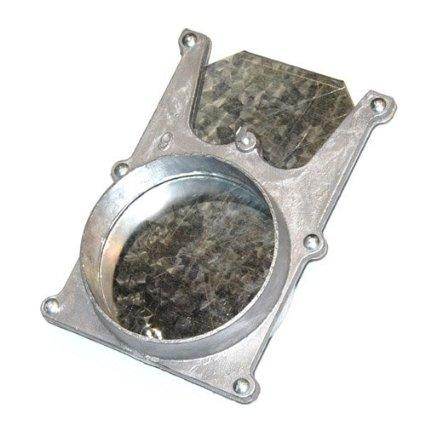
Mike
http://tenderfootfarmer.ca
 1
1








paul wheaton wrote:
72) The tipi is wonky. The lower edge has an odd shape. We bought it used and now we are beginning to understand why the price was so good.
76) I think it would be good to have a collection of experiments involving the exhaust. My concern is that once the fire goes out, the chimney continues to draw cold air through the mass - taking the heat out through the chimney. One thought is to put a guillotine where the exhaust comes out of the mass and shut that off when the fire goes out.








Kristie Wheaton wrote:here is the video of it works








Kristie Wheaton wrote:Len it should be fixed now....sorry about that





Ask me about food.
How Permies.com Works (lots of useful links)





Julia Winter wrote:So, it's been really, really, REALLY cold over your way in the Montana Mountains.
How's life in the tipi?











Ask me about food.
How Permies.com Works (lots of useful links)





 2
2




 1
1




 1
1




 1
1




 1
1




 2
2















Ask me about food.
How Permies.com Works (lots of useful links)





 1
1




Mike
http://tenderfootfarmer.ca




Try, try again.




Shenanigans of the sheep and wooly sort.. And many more.. https://www.instagram.com/girlwalkswithgoats/
Papa always says, "Don't go away angry... just go away."




Micky Ewing wrote:One thing I'm wondering as I look at these photos is how liveable the space is. I've no doubt you have a cozy bed but that bench takes up a lot of floor space. Where do you cook? Where do you put pots, dishes, clothes etc.? Where do you prepare food and wash dishes?
Do you think in-floor heating might be a better option, with the bed at floor level?




Emily Aaston wrote:
We also have thought about building a mass that is at the level of the floor so that the floor is heated and we have a larger space. It would certainly be worth trying!




Function determines structure.




Living today because no other time exists.




Lua Sage wrote:
I'll be starting with the bare ground. I intend to build up a level rock and dirt circle, about 16 inches in the front of the tipi and with ground sloping, about 22 inches in the back. I will build the RMH flat on the ground, or on top of rocks as needed, then fill with rock and dirt to the level for the floor of the tipi. So, here are some questions.
1. What if I were to make a frame along the pipe and then put about 3 - 4 inches of perlite under the pipe. Would that help to send more heat upward instead of into the ground? I mean by this, rather than surrounding the pipe with rocks, how about putting the pipe basically on the ground with perlite under it, and then rocks to the sides and top?
2. All the literature tells me I need between 30-40 feet of pipe. Would it be a problem to have more pipe? My tipi is 19 ft. around. I figured out the distance of 37 feet of pipe at a circle about 12 feet in diameter. So, I could make the circle about that big, or I could have more pipe and make it a larger diameter circle.
3. I know I need to use cob inside the stove itself. I used a commercial high heat cement on the one in my house and it tends to crumble. So, I want to use cob next time. But, I don't want to use cob all over the whole floor. I'm thinking that if I surround the pipe with rocks, and pour dirt over the whole thing, then cover it with sand (have a LOT of crushed granite sand that made sandbars all around my house in the flood last Sept.). So would it work to use dirt and sand instead of cob around the rocks? It would fill air spaces in the rocks I think. Is that a problem?
4. I don't want a floor that is made out of anything that would stop energy from the earth, so I'm thinking about drying out the dirt and sand completely with the stove, then putting wool rugs down on the sand. How many inches of rock, dirt, sand do I need between the pipe and the rugs to avoid having the rugs smolder or burn? How many inches is too many inches for the heat to effectively heat the air space?
 if you use gravel, you can add or remove mass with a shovel. I would start a little low and add as I went. If the floor is too hot for your feet add more... if your feet can stand it, so can wool. This is not rocket sci.... well ok maybe it is
if you use gravel, you can add or remove mass with a shovel. I would start a little low and add as I went. If the floor is too hot for your feet add more... if your feet can stand it, so can wool. This is not rocket sci.... well ok maybe it is  but it is still a lot of common sense too.
but it is still a lot of common sense too.
5. Is there any problem with having the 55 gallon drum buried 18 inches in the floor? Is there any problem with having the entire height of the firebox surrounded by rock and dirt in the floor?
Anything else I'm missing?




Living today because no other time exists.




Lua Sage wrote:I will plan for 50 ft of pipe, since that is the maximum. With a single large circular shape to the pipe, the bends are kept to a minimum - no sharp turns and a gentle curve around.
Lua Sage wrote:About the flue going up outside the tipi - at the end of the pipe. Does that flue need to go up into the air significantly to achieve a draw? Or can it just be a hole going out at the level of the exit pipe?
Lua Sage wrote:I do plan the exact same dimensions for the rocket stove as the one in my house with such a fabulous draw, except that I want to make the firebox a little bit bigger diameter, just for the pleasure of an open fire in the tipi. Will a larger firebox opening at the top change the draw?
Mike
http://tenderfootfarmer.ca




Living today because no other time exists.




Lua Sage wrote:So, if every curve is a problem, would it be better to design it with straight pipe runs all the way across instead of circular, with a 180 degree turn? That would mean only two rows of pipe, of about 40 ft.
Lua Sage wrote:I would definitely have some upward vent because of snow - just not 22 ft into the air. So, say a 4 ft vertical pipe at the end, with a 180 curved top to stop rain and slow down wind blowback.
![Filename: tipi-chimney.png
Description: [Thumbnail for tipi-chimney.png]](/t/29327/a/17556/tipi-chimney.png)
Mike
http://tenderfootfarmer.ca




Success has a Thousand Fathers , Failure is an Orphan
LOOK AT THE " SIMILAR THREADS " BELOW !




Micky Ewing wrote:I'm just going to barge in here with a couple of thougts.
 ) heat takes time to travel through earth. In the PAHS world they say 9 inches per month, but that is with lower temperatures than your flue pipes... still, don't expect a nice even warm floor to walk on. You will have favourite spots to sit and sleep depending on the inside air temperature... how close to pipe you want to be.
) heat takes time to travel through earth. In the PAHS world they say 9 inches per month, but that is with lower temperatures than your flue pipes... still, don't expect a nice even warm floor to walk on. You will have favourite spots to sit and sleep depending on the inside air temperature... how close to pipe you want to be.




Living today because no other time exists.










Success has a Thousand Fathers , Failure is an Orphan
LOOK AT THE " SIMILAR THREADS " BELOW !




Lua Sage wrote:Thank you, Micky. So, if every curve is a problem, would it be better to design it with straight pipe runs all the way across instead of circular, with a 180 degree turn? That would mean only two rows of pipe, of about 40 ft.
 the fire has been in the centre or very slightly offset. There are obvious reasons why this was done with an open fire, but I can think of at least some reasons for centering the barrel as well. The safety aspect has not really gone away for sure. The evenness of heat use from the barrel is another reason. If it rains there is less likelihood of things touching the skin producing a hole in the air layer and letting water through (Len lives in a rainy part of the world... but then he would not use a tent for long term living on the wet coast). It would give access to the top of the barrel without having to lean over the feed. <tongue in cheek> It gives a clear indication of where the mens and womens side of the tipi is.</tongue in cheek> (traditionally this was true, but I think we have gotten beyond that now) Anyway, It is normally frowned on, but you could then use more than one flue coming out of a manifold and have them radiating out. The main thing to remember is that it is impossible (pretty much) to expect the flue gas to split exactly evenly between flues, so there may be more heat from one than other(s). This has been done with reasonable success, but again, I would try it out and see what part of the flue gets warmest and take that into consideration when deciding where to place ones sleeping area. Traditionally this has been close to the skin with the awake time area being close to the radiant heat more towards the centre.
the fire has been in the centre or very slightly offset. There are obvious reasons why this was done with an open fire, but I can think of at least some reasons for centering the barrel as well. The safety aspect has not really gone away for sure. The evenness of heat use from the barrel is another reason. If it rains there is less likelihood of things touching the skin producing a hole in the air layer and letting water through (Len lives in a rainy part of the world... but then he would not use a tent for long term living on the wet coast). It would give access to the top of the barrel without having to lean over the feed. <tongue in cheek> It gives a clear indication of where the mens and womens side of the tipi is.</tongue in cheek> (traditionally this was true, but I think we have gotten beyond that now) Anyway, It is normally frowned on, but you could then use more than one flue coming out of a manifold and have them radiating out. The main thing to remember is that it is impossible (pretty much) to expect the flue gas to split exactly evenly between flues, so there may be more heat from one than other(s). This has been done with reasonable success, but again, I would try it out and see what part of the flue gets warmest and take that into consideration when deciding where to place ones sleeping area. Traditionally this has been close to the skin with the awake time area being close to the radiant heat more towards the centre.



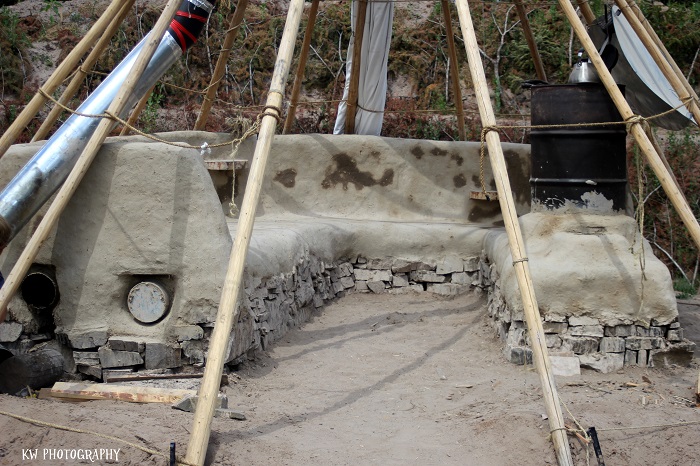
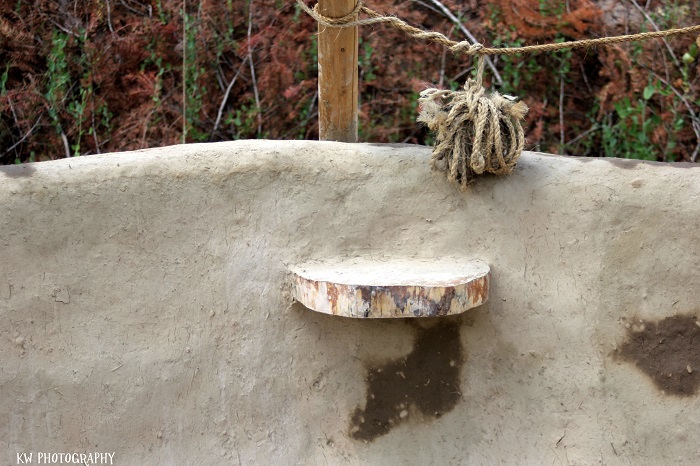
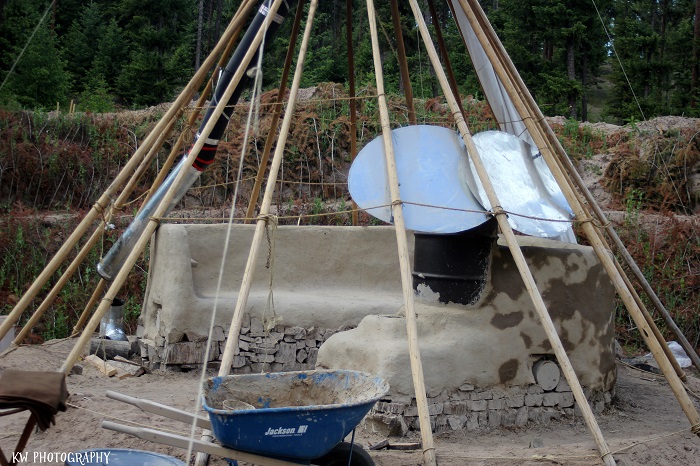
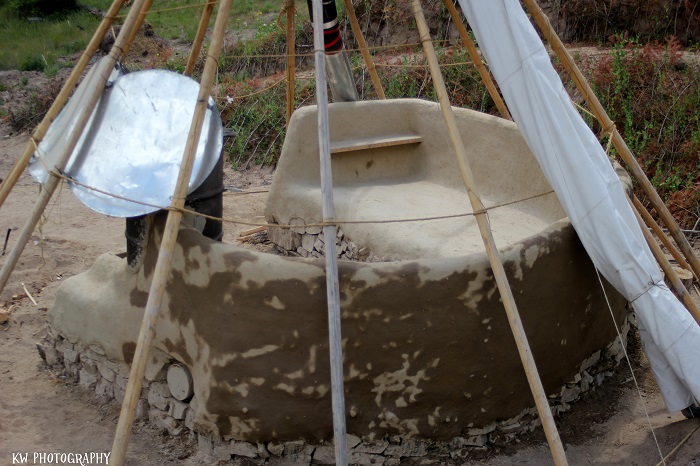
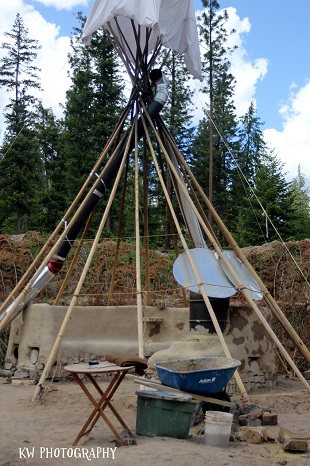
 1
1













|
Just the other day, I was thinking ... about this tiny ad:
Learn Permaculture through a little hard work
https://wheaton-labs.com/bootcamp
|








